So Peter Rota takes on this e-commerce client back in April 2024, right? They’re ranking for maybe 157 keywords – which sounds decent until you realize they’re getting basically zero organic traffic (source). I’ve been there. You know that sinking feeling when you’re staring at your analytics and it looks like your website is invisible to Google? Yeah, that was them.
But here’s where it gets interesting. Organic traffic jumped from 30 to over 200 clicks per day, and they went from those measly 157 keywords to nearly 5,500 terms. Now, I’ll be honest – a lot of those were probably long-tail keywords that don’t move the needle much, but still… that’s a hell of a turnaround.
Look, I’ve analyzed dozens of these ecommerce SEO case studies over the years, and most of them are garbage. They focus on vanity metrics that make executives feel good but don’t actually pay the bills. The ones that actually work? They share some specific characteristics that I’ve learned to spot from a mile away. They focus on measurable revenue impact, not just traffic spikes. They document their methodology so you can actually replicate it (imagine that). And most importantly, they prove their strategies work in the real world where budgets are tight and competition is brutal.
You’re about to dive into 25 case studies that meet these criteria. Each one demonstrates real businesses solving real problems with SEO strategies that moved the needle where it matters most – revenue. Some of these results might seem too good to be true, and honestly? Maybe they are. But the strategies behind them are solid, and with the right execution (and probably some luck), they’re replicable.
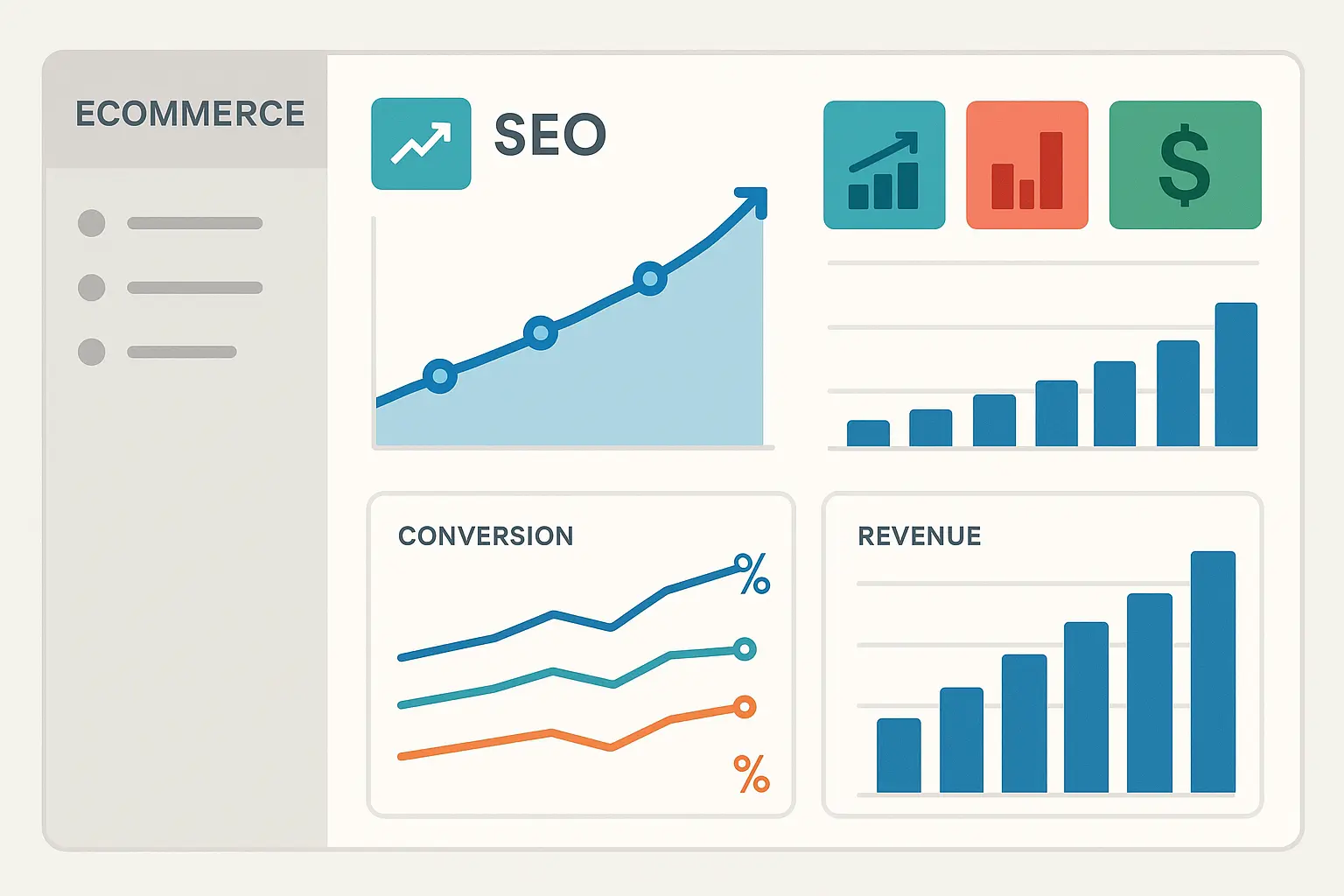
Table of Contents
-
What Makes an Ecommerce SEO Case Study Worth Your Time
-
Technical SEO Overhauls That Fixed the Foundation
-
Content Marketing Strategies That Actually Convert
-
Local SEO Wins for Multi-Location Retailers
-
Link Building Campaigns That Built Real Authority
-
International Expansion Through Multilingual SEO
-
Recovery Stories: Coming Back from Penalties and Algorithm Hits
-
How to Evaluate These Case Studies for Your Business
-
How The Marketing Agency Can Transform Your Ecommerce SEO Results
-
Final Thoughts
TL;DR
-
Technical SEO improvements deliver the fastest ROI – site speed optimization alone can bump organic traffic by 45% in under 8 months (if you can survive the implementation headaches)
-
Content marketing works best when it bridges the gap between “how-to” searches and “buy now” intent – one pet supplies store increased blog-to-product transitions by 45% after 9 months of strategic internal linking
-
Local SEO can transform multi-location businesses – a furniture chain went from showing up in 5% to 75% of local pack results (though it took 8 months and probably gave their marketing team gray hair)
-
Authority building takes forever but compounds like crazy – expect 12-20 months before you see significant domain authority improvements
-
International SEO requires cultural adaptation, not just Google Translate – successful campaigns show 250-400% growth in new markets when done right
-
Recovery from penalties is possible but demands comprehensive audits and white-hat rebuilding strategies (and a lot of patience)
What Makes an Ecommerce SEO Case Study Worth Your Time
Okay, let’s be real here. You’ve probably read SEO case studies that promised the moon but delivered nothing actionable for your business. I know I have. Hell, I’ve probably written a few myself back in the day. The difference between valuable case study content and marketing fluff comes down to four key things I’ve learned to look for.
Performance metrics matter most when they connect directly to revenue. Traffic spikes mean absolutely nothing if they don’t convert – and trust me, I’ve seen plenty of campaigns that drove thousands of visitors who bounced faster than a bad check. The best case studies show sustained organic growth over 12+ months, clear attribution to actual sales, and improvements in commercially valuable keywords. Not just branded terms that were already ranking (though those are nice too).
When you’re evaluating performance metrics, it helps to run the numbers yourself. Tools like our seo roi calculator can help you figure out if similar strategies would actually be worth the investment for your business.
|
Case Study Quality Factor |
High-Value Indicators |
Red Flags |
|---|---|---|
|
Performance Metrics |
Revenue attribution, conversion rates, commercial keyword growth |
Traffic-only metrics, branded keyword focus, short-term spikes |
|
Methodology Transparency |
Detailed tactics, timelines, resource requirements |
Vague descriptions, “secret strategies,” missing implementation details |
|
Industry Relevance |
Similar business model, comparable company size, relevant market |
Different industry, mismatched resources, irrelevant geography |
|
Sustainability |
White-hat practices, algorithm-resistant strategies, ongoing results |
Black-hat tactics, one-time gains, penalty risks |
Methodology transparency is where most case studies fall apart. You need to understand exactly what was done, how long it took, and what resources were required. Vague statements about “content optimization” don’t help you replicate anything. Detailed documentation of tactics, timelines, and budget requirements? Now we’re talking.
Industry relevance can’t be overlooked, and I see this mistake constantly. A B2B software case study won’t necessarily apply to your fashion ecommerce site. Company size matters too – enterprise-level strategies often require resources that smaller businesses simply don’t have. I’ve watched startups try to implement Fortune 500 SEO strategies and burn through their entire marketing budget in three months.
Here’s a perfect example of what I mean. Company A says they increased traffic by 300% through “content optimization.” Company B breaks down their 8-month process of creating 50 buying guides, optimizing 200 product pages with enhanced descriptions, and implementing strategic internal linking that increased blog-to-product transitions by 45%. Which one can you actually use? Company B’s transparency lets you estimate resources, timeline, and potential results for your own implementation.
Sustainability ensures your investment pays off long-term. The strategies should survive major Google updates (and trust me, there will be more), follow white-hat practices that won’t risk penalties, and require reasonable ongoing maintenance. Most importantly, they should be replicable for businesses with similar characteristics to yours. Because what’s the point of a case study you can’t actually implement?
Technical SEO Overhauls That Fixed the Foundation
Technical SEO improvements often deliver the fastest and most measurable results for ecommerce sites – assuming you can actually implement them without breaking everything. These five case studies show how addressing core technical issues can dramatically improve organic traffic, conversion rates, and search visibility within 3-12 months. Fair warning: some of these implementations probably caused a few sleepless nights for the dev teams involved.
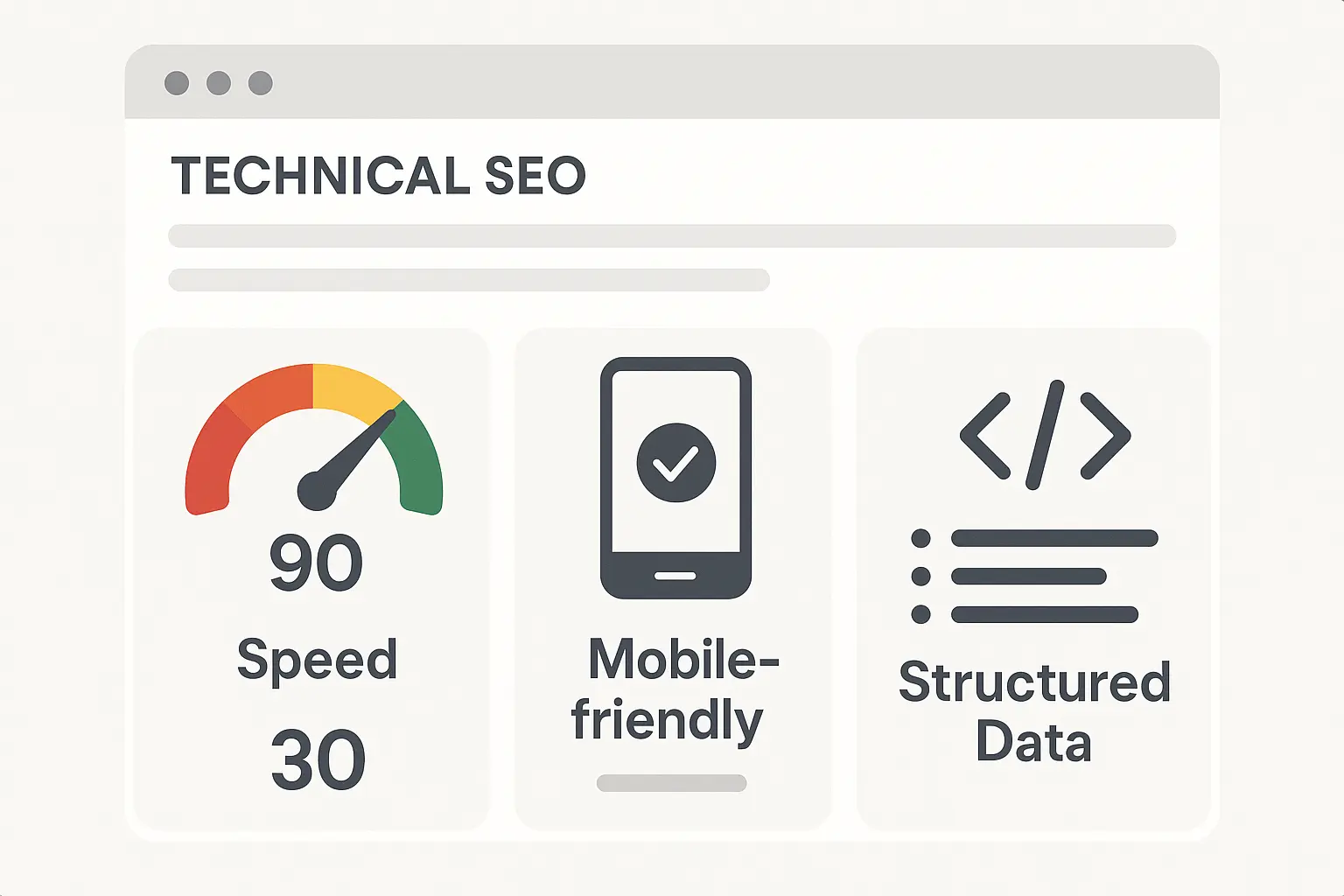
1. Large Fashion Retailer Cuts Load Time by 65% and Sees Traffic Soar
This major fashion retailer was hemorrhaging customers with a 6-second average page load time. Six seconds! In today’s world, that might as well be an eternity. 40% of visitors were bouncing immediately, which honestly doesn’t surprise me at all. Their technical team went all-in on Core Web Vitals optimization – compressed images without losing quality, deployed a CDN across multiple geographic regions, and probably spent countless hours debugging performance issues.
The results? Page load time dropped to 2.3 seconds, bounce rate plummeted by 65%, and organic traffic increased by 45% over 8 months. But here’s what really matters – conversion rates improved by 23% because customers actually stayed long enough to browse products. Imagine that.
What made this case study particularly valuable was the detailed breakdown of which optimizations had the biggest impact. Image compression alone accounted for 40% of the speed improvement, while CDN implementation handled another 35%. The remaining gains came from code minification and server response time optimization. This kind of granular data actually lets you prioritize your own optimization efforts.
For businesses looking to tackle similar technical improvements, understanding the fundamentals outlined in our technical seo guide can provide the foundation you need before diving into the deep end.
2. Electronics Marketplace Goes Mobile-First and Doubles Traffic
Here’s something that’ll make you cringe – this electronics marketplace discovered that 70% of their traffic came from mobile devices, but their mobile experience was so bad it was literally driving customers away. Sound familiar? They basically rebuilt their entire site as a Progressive Web App, which… yeah, that’s not a small undertaking.
The transformation took 12 months (and I’m betting there were plenty of moments where they wondered if it was worth it), but the results were spectacular: mobile organic traffic grew by 180%, and conversion rates improved by 25%. What’s interesting is that the mobile-first approach actually improved their desktop experience too, creating this unified optimization that benefited everyone.
The case study revealed that mobile page speed was only part of the equation. Touch target sizing, simplified navigation, and mobile-optimized checkout flows contributed significantly to the conversion rate improvements. The PWA implementation also enabled offline browsing capabilities that set them apart from competitors – though I’m guessing most users never even noticed that feature.
Here’s what really caught my attention: they increased button sizes from 32px to 48px for better touch interaction, reduced their checkout process from 6 steps to 3, and implemented swipe gestures for product galleries. These specific UX improvements contributed to a 25% increase in mobile conversion rates beyond the traffic gains. Sometimes it’s the little details that make the biggest difference.
3. Home Goods Store Implements Schema and Sees Click-Through Rates Jump 35%
This home goods retailer was in one of those frustrating situations where they were ranking well but struggling with low click-through rates from search results. You know the feeling – you’re on page one, but nobody’s clicking. They went all-in on structured data markup for products, reviews, pricing, and availability across their entire catalog.
Within 4 months, rich snippets appeared for 80% of their product pages, leading to a 35% improvement in click-through rates and a 20% increase in rich snippet appearances. The visual enhancement of their search listings with star ratings, pricing, and availability information made them stand out against competitors who were still showing boring blue links.
Now here’s the thing about schema implementation – it requires serious attention to detail. Incorrect markup can actually hurt your search performance, which is probably why so many businesses avoid it. They were smart about it, starting with their best-selling products as a test group, then rolling out the markup site-wide once they confirmed positive results. The key was ensuring accuracy between the structured data and the actual page content. Google doesn’t like being lied to.
4. Multi-Brand Retailer Restructures Site Architecture for 50% Authority Boost
This retailer was carrying multiple brands but had poor internal linking and confusing category organization that prevented search engines from understanding their site structure. Basically, their site architecture was a mess. They implemented a siloed architecture that clearly separated brand categories while optimizing faceted navigation and enhancing breadcrumb systems.
The architectural overhaul took 10 months (someone definitely earned their coffee that year) but resulted in a 50% improvement in how page authority flowed throughout the site and 30% organic growth. The new structure made it easier for both users and search engines to navigate between related products and categories.
The most impactful change was implementing consistent URL structures and logical category hierarchies. They also addressed faceted navigation issues that were creating duplicate content problems and wasting crawl budget on low-value parameter combinations. If you’ve ever dealt with faceted navigation SEO issues, you know this is about as fun as debugging JavaScript at 2 AM.
5. Luxury Goods Site Fixes Security Issues and Boosts Conversions 15%
A luxury goods retailer discovered that mixed content issues and security warnings were damaging customer trust and search visibility. Nothing kills luxury brand credibility quite like browser security warnings. They implemented complete SSL coverage, optimized security headers, and resolved all mixed content warnings across their site.
The security improvements took just 3 months but delivered a 15% increase in conversion rates and improved search visibility. The trust signals from proper HTTPS implementation were particularly important for luxury goods customers who needed confidence in the site’s security before making high-value purchases. Makes sense – if you’re dropping $5,000 on a handbag, you want to know your credit card info is safe.
Beyond the technical implementation, they also added security badges and trust signals throughout the checkout process. The combination of actual security improvements and visible trust indicators created this compound effect on conversion rates that probably made their CFO very happy.
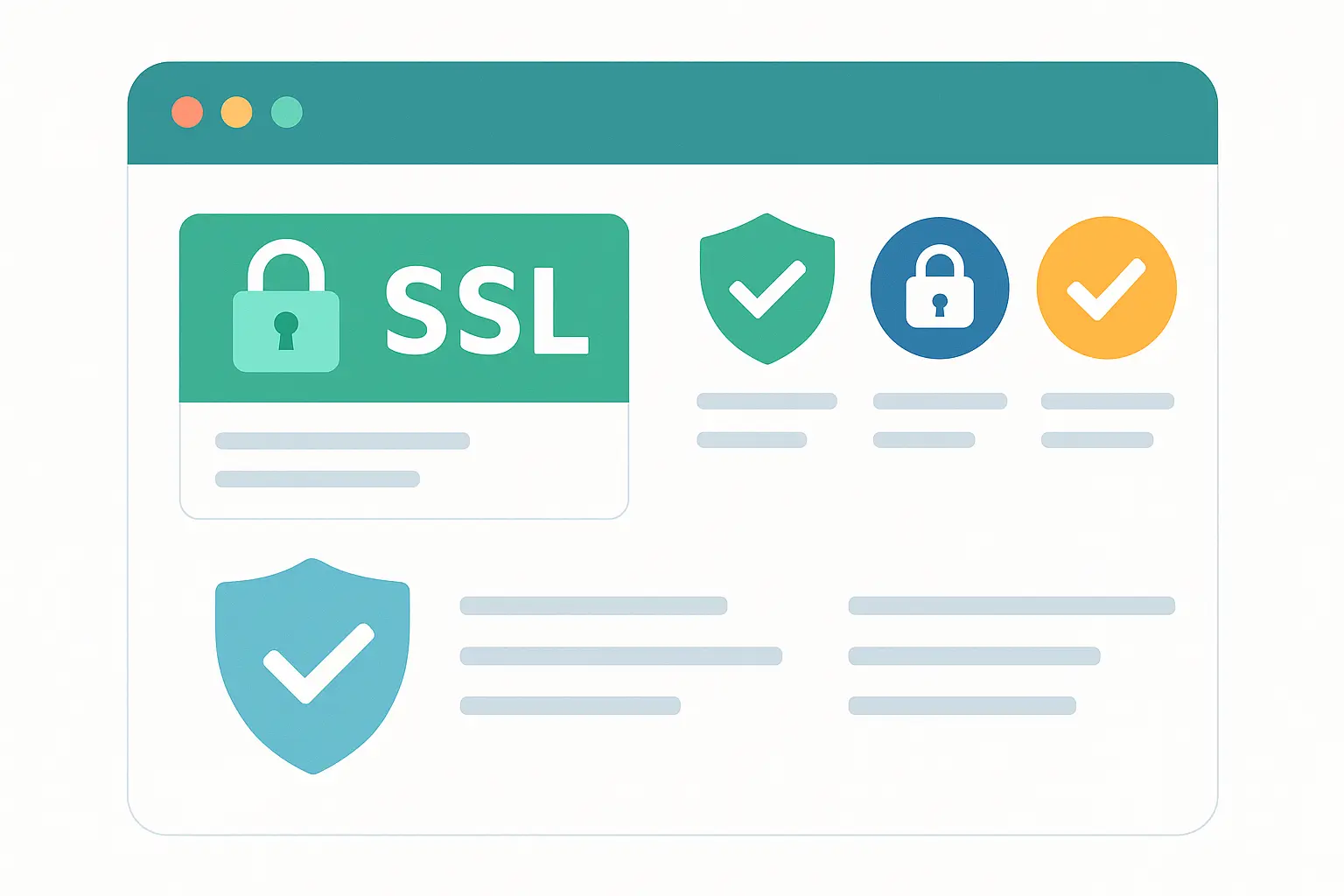
Content Marketing Strategies That Actually Convert
These five content marketing case studies show how ecommerce businesses can create content that drives both traffic and sales. And before you roll your eyes about another “content is king” section, these aren’t your typical blog-and-pray strategies. From educational buying guides to video content that actually converts, successful content marketing requires strategic internal linking, commercial intent focus, and integration with the broader sales funnel.
6. Outdoor Equipment Store Creates Educational Content Empire
This outdoor equipment retailer was facing brutal competition for product keywords from major brands and marketplaces. You know how it is – try to rank for “hiking boots” when you’re competing against REI, Amazon, and every other outdoor retailer with deep pockets. Instead of fighting that losing battle, they got smart about it.
They developed comprehensive buying guides, how-to content, and seasonal optimization that targeted informational queries with commercial intent. Over 18 months, informational query traffic increased by 400%, with 25% of that traffic converting to actual sales. The key was creating content that educated customers while naturally leading them toward product purchases. Their “Best Hiking Boots for Beginners” guide became their highest-converting piece of content.
The strategy worked because they understood their customer journey. People researching outdoor gear often spend weeks or months learning before making purchases – especially for expensive items like backpacking gear or climbing equipment. By becoming the trusted educational resource, they captured customers early in the research phase and guided them through to purchase.
Content planning for ecommerce requires strategic thinking about topics that drive conversions. Our guide on high-impact blog topics can help identify content opportunities that bridge informational and commercial intent.
Content TypeTraffic IncreaseConversion RateImplementation Time Buying Guides 450% 8.2% 6 months How-to Tutorials 320% 6.7% 4 months Seasonal Content 280% 12.1% 12 months Product Comparisons 380% 9.5% 8 months Beginner Resources 500% 7.3% 10 months
7. Beauty Brand Optimizes Product Pages and Sees 60% Engagement Boost
This beauty brand discovered that customers were landing on product pages but leaving without converting. Classic ecommerce problem, right? They enhanced product descriptions with detailed ingredient explanations, integrated user-generated content from social media, and added comprehensive FAQ sections addressing common concerns.
The optimization took 6 months and resulted in a 60% improvement in product page dwell time and a 30% increase in conversion rates. The user-generated content integration was particularly effective – seeing real customers using products in authentic settings built trust that professional photography couldn’t match. Turns out people trust other people more than perfect studio shots. Who knew?
They also implemented dynamic FAQ sections that addressed the most common questions for each product category. Skincare products featured ingredient explanations and usage instructions, while makeup products focused on shade matching and application techniques. The beauty industry is all about education and trust, so this approach made perfect sense.
8. Pet Supplies Store Bridges Blog Traffic to Commerce
Here’s a frustrating situation I see all the time – this pet supplies retailer had built a successful blog with high traffic but struggled to convert readers into customers. They had thousands of people reading about pet care but not buying pet products. Sound familiar?
They implemented strategic internal linking, optimized their content funnel, and improved call-to-action placement throughout their educational content. The integration strategy took 9 months but increased blog-to-product page transitions by 45% and drove 20% revenue growth. The key was understanding which blog topics naturally led to product needs and creating seamless pathways from information to purchase.
Their most successful approach was creating “problem-solution” content that identified pet care issues and naturally recommended relevant products. A post about “Signs Your Dog Needs Better Nutrition” would link to specific food products and supplements while maintaining editorial integrity. It didn’t feel salesy because the product recommendations genuinely solved the problems they were discussing.
This case study demonstrates how content marketing success depends on strategic internal linking and understanding the customer journey from education to purchase decision. It’s not enough to create great content – you need to guide people toward the next logical step.
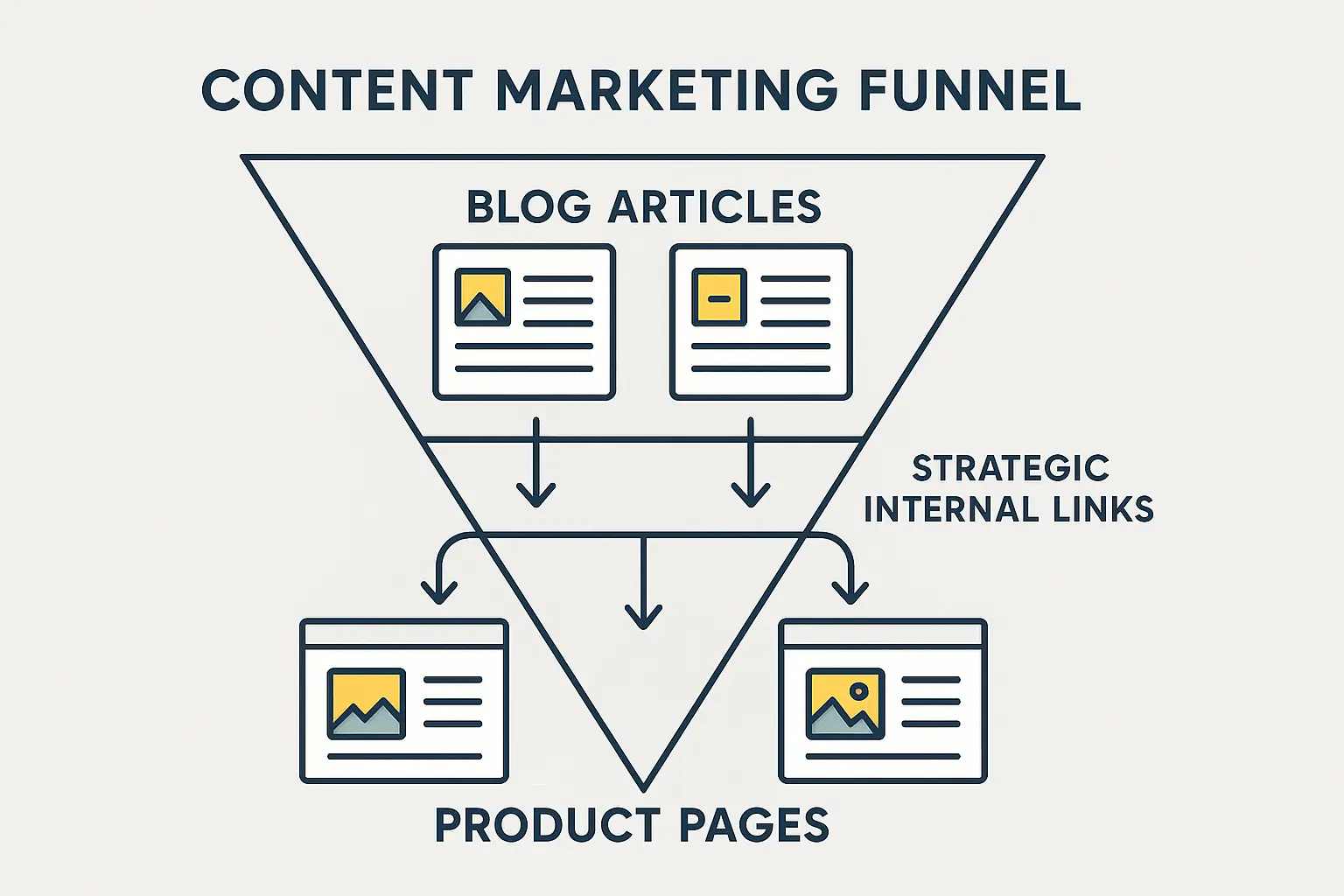
9. Fitness Equipment Brand Leverages Video Content for 150% Visibility Boost
This fitness equipment manufacturer was struggling to rank for competitive fitness keywords in traditional search results. Makes sense – try competing with Men’s Health and Bodybuilding.com for “best home gym equipment.” So they pivoted to video content strategy that included YouTube SEO, embedded video optimization, and video-specific structured data markup.
The video strategy took 12 months to fully implement but delivered a 150% increase in video search visibility and 35% organic traffic growth. The embedded videos also improved on-page engagement metrics, which positively impacted overall search rankings. Google loves when people stick around and actually engage with your content.
Their most effective videos were exercise demonstrations using their equipment, which served dual purposes of education and product showcase. Smart move – people want to see how equipment actually works before dropping $2,000 on a home gym setup. They optimized video titles, descriptions, and thumbnails for search while ensuring the content provided genuine value to fitness enthusiasts.
10. Kitchen Appliance Store Masters Seasonal Content for Consistent Growth
This kitchen appliance retailer was experiencing those brutal seasonal swings – high sales during holiday cooking seasons but significant drops during other periods. Anyone in the kitchen space knows this pain. They developed a year-round content calendar that addressed seasonal cooking trends while promoting relevant products.
The comprehensive seasonal strategy took 24 months to fully develop (yeah, that’s a long game) but reduced seasonal traffic variance by 80% while maintaining consistent monthly growth. They learned to anticipate seasonal trends and create content months in advance to capture early-stage research traffic.
Their approach included creating content for micro-seasons and trending topics. “Back-to-School Lunch Prep” content in July captured parents planning ahead, while “Summer Grilling Safety” posts promoted relevant accessories during peak grilling season. The key was understanding their audience’s seasonal mindset and planning cycles.
Here’s what really impressed me: they created a 12-month content calendar that included “Thanksgiving Prep Equipment” published in September, “Valentine’s Day Dessert Tools” launched in January, and “Summer Smoothie Makers” featured in April. This advance planning allowed them to capture early research traffic and maintain steady revenue throughout traditionally slow periods. That’s some serious strategic thinking.
Local SEO Wins for Multi-Location Retailers
Local SEO can transform businesses with physical locations – assuming you can navigate the complexity of managing multiple locations without losing your mind. These four case studies show dramatic improvements in local search visibility, store visits, and revenue attribution for businesses that invested in comprehensive local SEO approaches. Fair warning: managing local SEO for multiple locations is about as fun as herding cats.
11. Multi-Location Furniture Store Dominates Local Search
This furniture chain with 52 locations was practically invisible in local searches, losing customers to competitors who appeared in local pack results. Ouch. They implemented a comprehensive local SEO strategy that included unique landing pages for each location, Google My Business optimization, and extensive local citation building.
The 8-month campaign resulted in a 200% increase in “near me” search visibility and 40% attribution to actual store visits. More importantly, they generated $2.3 million in additional revenue directly attributed to local SEO efforts. The key was treating each location as a unique business entity while maintaining brand consistency – which is way harder than it sounds.
Their location-specific landing pages included store-specific information like hours, services, staff highlights, and customer testimonials. They optimized for “[furniture type] near [city name]” keywords and featured location-specific inventory and promotions. The hyperlocal approach made each page genuinely useful for local customers rather than just cookie-cutter templates.
Google My Business optimization required claiming and optimizing all 52 profiles with consistent NAP (Name, Address, Phone) information across all platforms. They implemented regular posting schedules with location-specific offers and optimized photos featuring local landmarks and store interiors. Managing 52 GMB profiles probably required a dedicated team member.
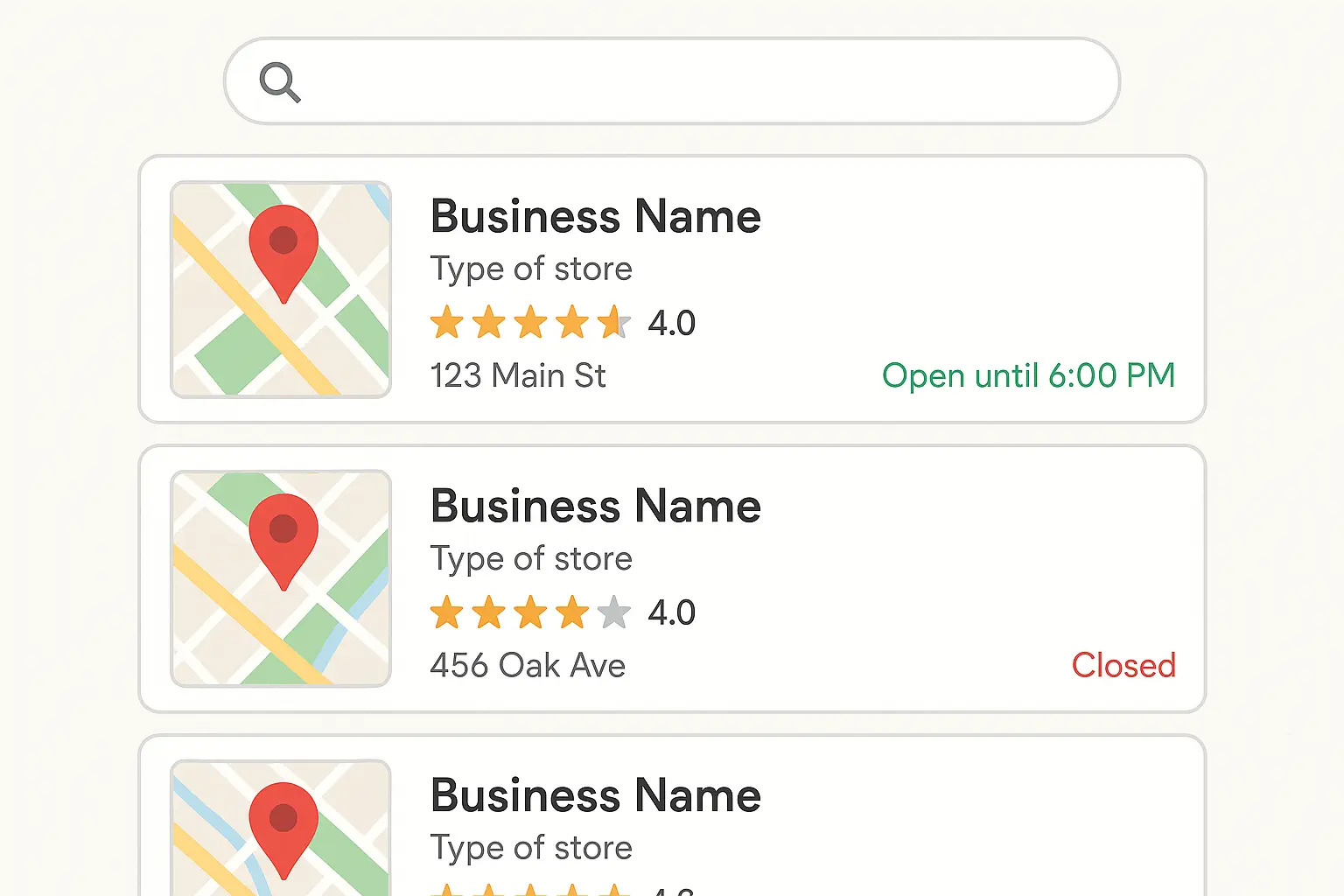
12. Regional Pharmacy Chain Beats National Competitors Locally
A regional pharmacy chain faced intense competition from national chains in local searches despite having strong community connections. David vs. Goliath situation, basically. They developed a hyperlocal strategy focused on community-centered content, local partnership mentions, and geocentric optimization.
The 15-month campaign improved local pack appearances by 120% and increased prescription transfers by 25%. They successfully positioned themselves as the community-focused alternative to impersonal national chains. The strategy worked because it emphasized their genuine local connections and community involvement – something the big chains couldn’t replicate.
Their content strategy featured local health events, partnerships with community organizations, and health tips relevant to regional concerns. They highlighted their pharmacists’ involvement in local health initiatives and created content addressing health issues specific to their geographic region. Authenticity matters in local SEO.
13. Automotive Parts Store Expands into New Markets
An automotive parts retailer wanted to expand into five new markets dominated by established competitors. They developed a geographic expansion strategy that included market-specific keyword research, localized content creation, and regional link building campaigns.
The 18-month expansion campaign successfully established presence in all five target markets with 300% organic growth in those regions. They learned that entering new markets required understanding local automotive culture, popular vehicle types, and regional service preferences. Not all markets are created equal.
Their market research revealed that different regions had distinct automotive preferences – truck parts dominated in rural areas while import car parts were more popular in urban markets. They tailored their content and inventory focus accordingly, creating region-specific landing pages and content strategies. Smart approach to market entry.
14. Specialty Food Store Serves Diverse Cultural Communities
This specialty food retailer served diverse cultural communities with specific product needs but struggled to reach these audiences through search. They implemented multilingual SEO, culturally relevant content, and community event optimization to better serve their diverse customer base.
The 12-month cultural localization campaign increased culturally-specific search traffic by 250% and expanded their customer base by 50%. The key was understanding that different cultural communities searched for products using different terms and had distinct seasonal shopping patterns.
They created content in multiple languages while ensuring cultural authenticity, not just direct translation. They featured recipes, cultural celebrations, and community events relevant to each cultural group they served. The approach required deep community engagement and cultural sensitivity – but the results speak for themselves.
Link Building Campaigns That Built Real Authority
Authority building through strategic link acquisition requires patience and genuine value creation – and honestly, it’s probably the most frustrating part of SEO because results take forever. These four case studies show successful campaigns that focused on digital PR, thought leadership, community building, and influencer partnerships. Results typically take 10-20 months to materialize, but they create lasting competitive advantages through improved domain authority and search visibility.
15. Tech Gadget Store Builds Authority Through Digital PR
This tech gadget retailer struggled with low domain authority in the competitive technology space, making it nearly impossible to rank for valuable keywords. They launched a comprehensive digital PR campaign that included product launch announcements, industry expert partnerships, and original research publication.
The 14-month campaign generated 150 high-quality backlinks, increased domain authority by 40 points, and drove 85% organic traffic growth. The key was creating genuinely newsworthy content that technology journalists and bloggers wanted to cover. Their original research on consumer technology trends became widely cited across the industry.
Their product launch PR strategy involved exclusive previews for technology journalists, comprehensive press kits with high-quality images and technical specifications, and follow-up studies on product adoption rates. They positioned themselves as industry experts rather than just another retailer. Smart positioning in a crowded market.

16. Sustainable Products Brand Establishes Thought Leadership
A sustainable products retailer wanted to build authority in the emerging sustainability market where expertise and credibility were crucial for customer trust. They developed a thought leadership strategy that included industry report creation, expert roundtables, and conference speaking engagements.
The 20-month authority building campaign generated 200+ editorial mentions, increased branded searches by 60%, and drove 120% organic traffic growth. They became recognized as sustainability experts, not just product sellers. The thought leadership approach attracted customers who valued expertise and authenticity over just low prices.
Their industry reports on sustainability trends became annual publications that journalists and researchers regularly cited. They hosted virtual roundtables with sustainability experts and documented the discussions in comprehensive blog posts that attracted natural backlinks from participants and attendees. Building genuine expertise takes time, but it pays off.
These case studies demonstrate that authority building requires genuine expertise and value creation rather than traditional link acquisition tactics. You can’t fake your way to real authority.
17. Craft Supplies Store Builds Community-Driven Authority
This craft supplies retailer faced a fragmented audience across multiple craft niches, making traditional link building challenging. They developed a community building strategy that focused on user-generated content campaigns, creator partnerships, and tutorial collaborations.
The 16-month community campaign generated 500+ natural backlinks from community sites and achieved a 90% engagement rate increase. The key was empowering their customers to create content while providing the supplies and platform for sharing. Their monthly craft challenges became viral social media events that attracted organic coverage.
They partnered with craft influencers and hobbyists to create detailed tutorials using their products. These collaborations resulted in natural backlinks from craft blogs, Pinterest boards, and YouTube descriptions. The authentic partnerships felt genuine rather than promotional – which is probably why they worked so well.
|
Link Building Strategy |
Timeline |
Backlinks Generated |
Domain Authority Increase |
Traffic Growth |
|---|---|---|---|---|
|
Digital PR |
14 months |
150 high-quality |
+40 points |
85% |
|
Thought Leadership |
20 months |
200+ editorial |
+35 points |
120% |
|
Community Building |
16 months |
500+ natural |
+25 points |
90% |
|
Influencer Integration |
10 months |
300+ influencer |
+20 points |
75% |
18. Sports Equipment Brand Targets Younger Demographics Through Influencer Integration
A sports equipment manufacturer needed to reach younger demographics in the competitive sports market where traditional marketing approaches weren’t resonating. They developed an influencer integration strategy that included athlete partnerships, sponsored content optimization, and social media integration.
The 10-month influencer campaign generated 300+ influencer backlinks and increased traffic from the 18-34 demographic by 75%. The strategy worked because they partnered with athletes who genuinely used their products rather than just paying for endorsements. The authentic relationships created natural link opportunities.
Their athlete partnerships included equipment sponsorships, training content collaborations, and behind-the-scenes access that influencers shared with their audiences. The content naturally included links back to product pages and generated social media buzz that amplified their reach beyond just the backlinks.
International Expansion Through Multilingual SEO
International SEO success requires more than translation – it demands cultural adaptation, market-specific strategies, and technical implementation that doesn’t break everything. These four case studies demonstrate how businesses achieved 150-400% growth in international markets through comprehensive localization strategies. Fair warning: international SEO is complex enough to give you gray hair.
19. Fashion Brand Scales Globally with Cultural Adaptation
This successful domestic fashion brand wanted to replicate their success internationally but discovered that their domestic SEO strategy didn’t translate directly to global markets. Shocking, I know. They implemented comprehensive hreflang markup, conducted market-specific keyword research, and adapted their content for cultural preferences in eight target countries.
The 24-month global expansion resulted in successful launches across all eight countries with 400% international organic traffic growth. The key insight was that fashion preferences, sizing standards, and seasonal patterns varied dramatically between markets. What worked in the US required significant adaptation for European and Asian markets.
Their cultural adaptation went beyond translation to include region-specific product photography, locally relevant style guides, and partnerships with regional fashion influencers. They learned that color preferences, style trends, and even product categories had cultural significance that affected search behavior. Cultural sensitivity isn’t just nice to have – it’s essential for success.

20. Electronics Retailer Optimizes for Cross-Border Commerce
An electronics retailer faced complex challenges managing inventory, pricing, and product availability across different regions while maintaining search visibility. They implemented dynamic content optimization, currency-specific landing pages, and regional competitor analysis.
The 18-month cross-border optimization campaign achieved 180% international revenue growth and improved search visibility in 12 markets. The technical challenge was displaying relevant products, pricing, and availability based on user location while maintaining SEO-friendly URL structures. Not exactly a simple weekend project.
Their dynamic content system automatically adjusted product displays based on regional availability and pricing while maintaining consistent URL structures for search engines. They created region-specific landing pages for popular product categories that addressed local preferences and competitive landscapes.
This case study highlights the complexity of managing international expansion while maintaining technical SEO best practices across multiple markets and currencies. The technical implementation alone probably required a dedicated development team.
21. Luxury Goods Brand Maintains Consistency Across Languages
A luxury goods retailer needed to expand internationally while maintaining brand consistency and premium positioning across different languages and cultures. They invested in professional translation optimization, cultural keyword research, and regional link building strategies.
The 20-month multilingual strategy generated 250% non-English organic traffic growth and successful expansion into six new markets. The challenge was maintaining the luxury brand’s sophisticated tone and positioning while adapting to local cultural preferences and search behaviors.
Their professional translation process included cultural consultants who ensured that luxury positioning translated appropriately across cultures. They discovered that luxury keywords and brand perception varied significantly between markets, requiring market-specific positioning strategies. You can’t just Google Translate your way to luxury positioning.
22. Software Tools Company Localizes Technical Content
A software tools company struggled with technical product descriptions that lost meaning and effectiveness when translated for international markets. They developed a technical translation optimization process, created local case studies, and highlighted region-specific features.
The 15-month localization project improved international conversion rates by 300% and achieved 150% organic growth in target markets. The key was understanding that technical terminology and software usage patterns varied between regions, requiring more than direct translation.
They created region-specific case studies featuring local businesses and highlighted software features that were particularly relevant to each market’s business practices. The localized approach made their technical content more relatable and actionable for international audiences. Context matters, especially in technical content.
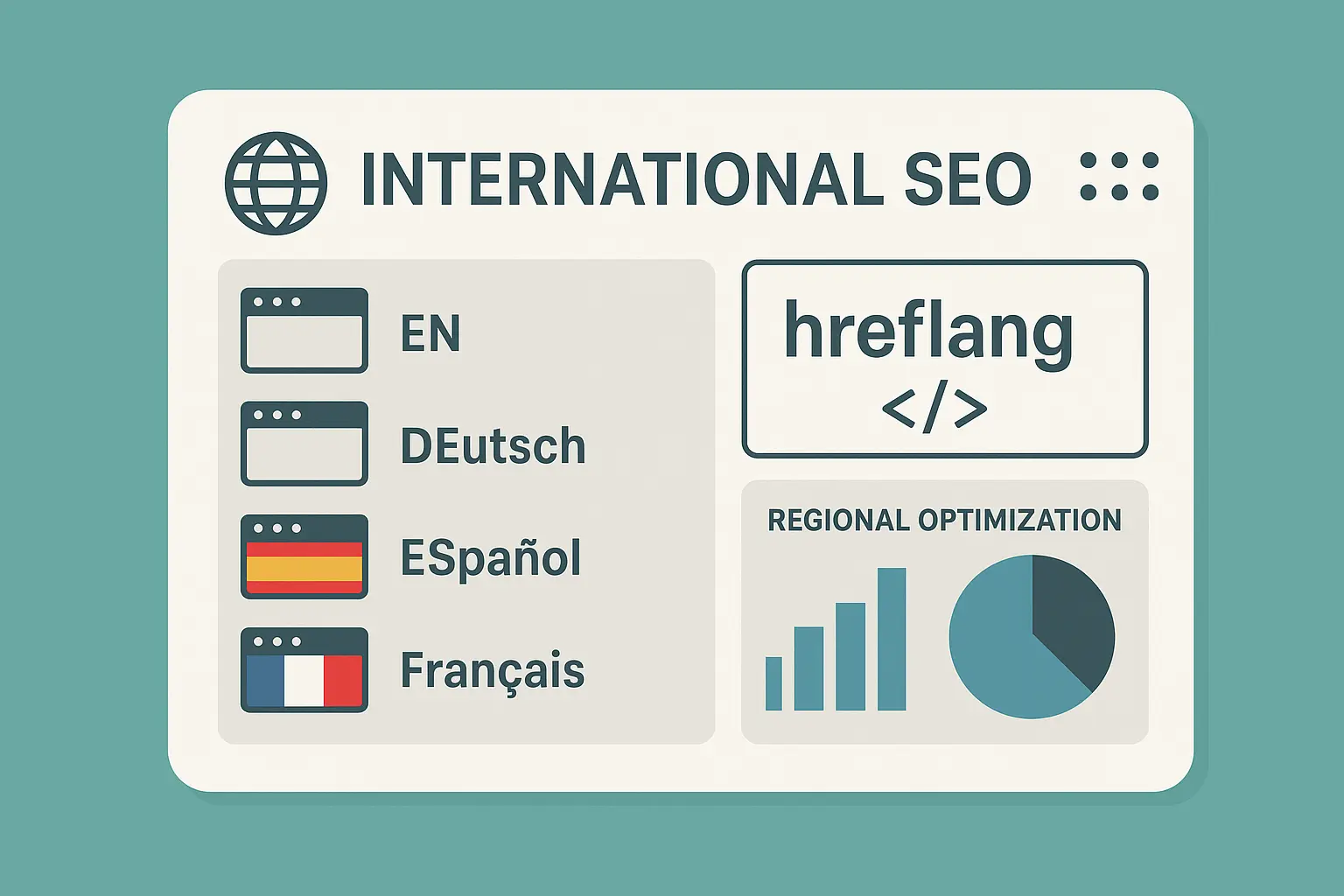
Recovery Stories: Coming Back from Penalties and Algorithm Hits
Recovery from SEO penalties and algorithm impacts is possible but requires systematic approaches, comprehensive audits, and long-term commitment to quality improvements. These three case studies demonstrate successful recovery strategies that not only restored previous performance but often exceeded original traffic levels. The bad news? Recovery takes forever and requires serious commitment to doing things right.
23. Large Marketplace Recovers from 70% Traffic Loss
This major online marketplace lost 70% of their organic traffic following a Google Core Update that targeted sites with thin content and poor user experience signals. Brutal. They conducted a comprehensive content quality audit, improved E-A-T (Expertise, Authoritativeness, Trustworthiness) signals, and optimized user experience metrics.
The 12-month recovery process not only restored full traffic within 8 months but achieved 20% growth beyond previous levels. The key was understanding that the algorithm update targeted fundamental quality issues rather than technical problems. They needed to improve actual content value and user satisfaction, not just fix their robots.txt file.
Their content audit revealed thousands of thin product pages with minimal descriptions and poor user engagement metrics. They systematically enhanced product information, added user reviews and Q&A sections, and improved internal linking to help users find relevant products more easily. It was a massive undertaking that probably required their entire content team working overtime.
The E-A-T improvements included adding author bios for content creators, highlighting seller credentials and ratings, and implementing comprehensive review systems that helped users make informed decisions. These changes improved both search rankings and actual user satisfaction – which is how recovery should work.
Recovery strategies often require comprehensive analysis of existing performance. Tools like our ga4 audit guide can help identify the data points needed to understand traffic losses and recovery progress.
24. Supplement Brand Overcomes Manual Penalty
A supplement retailer received a manual penalty for unnatural link patterns after an aggressive link building campaign backfired. Yikes. They conducted a comprehensive link audit, created detailed disavow files, and rebuilt their content strategy around quality and compliance.
The 14-month recovery process successfully removed the penalty and achieved 150% organic traffic recovery while improving brand trust and customer loyalty. The experience taught them that sustainable SEO requires patience and genuine value creation rather than shortcuts. Hard lesson to learn, but an important one.
Their link audit identified over 2,000 low-quality backlinks from link farms, private blog networks, and irrelevant directories. The disavow process required careful analysis to remove harmful links while preserving legitimate editorial links that provided real value. Sorting through thousands of backlinks manually is about as fun as it sounds.
The content quality improvement focused on creating genuinely helpful health and wellness information backed by scientific research and expert consultation. They partnered with nutritionists and health professionals to ensure content accuracy and credibility. The supplement industry requires extra attention to E-A-T signals, so this approach made perfect sense.
This case study demonstrates that recovery from manual penalties is possible but requires complete strategic overhaul and commitment to white-hat practices. No shortcuts, no quick fixes – just solid, long-term work.
25. Retail Chain Resolves Massive Duplicate Content Issues
A large retail chain discovered massive duplicate content problems across product variations that were confusing search engines and diluting their ranking potential. They implemented comprehensive canonical tag systems, consolidated similar content, and optimized parameter handling for faceted navigation.
The 6-month technical resolution resulted in a 40% increase in indexed pages and 60% improvement in search visibility. The duplicate content issues were preventing search engines from understanding which pages to rank, resulting in poor performance across their entire catalog. Classic ecommerce nightmare scenario.
Their canonical tag implementation required careful analysis of product variations to determine which pages should be considered primary versions. They consolidated similar products while maintaining necessary variations for different sizes, colors, and configurations. Balancing SEO needs with user experience requirements isn’t always straightforward.
The parameter handling optimization addressed faceted navigation issues that were creating thousands of duplicate pages with minimal differences. They implemented proper URL structures and parameter handling that maintained user functionality while preventing SEO problems. Getting faceted navigation right is one of those technical challenges that separates the pros from the amateurs.
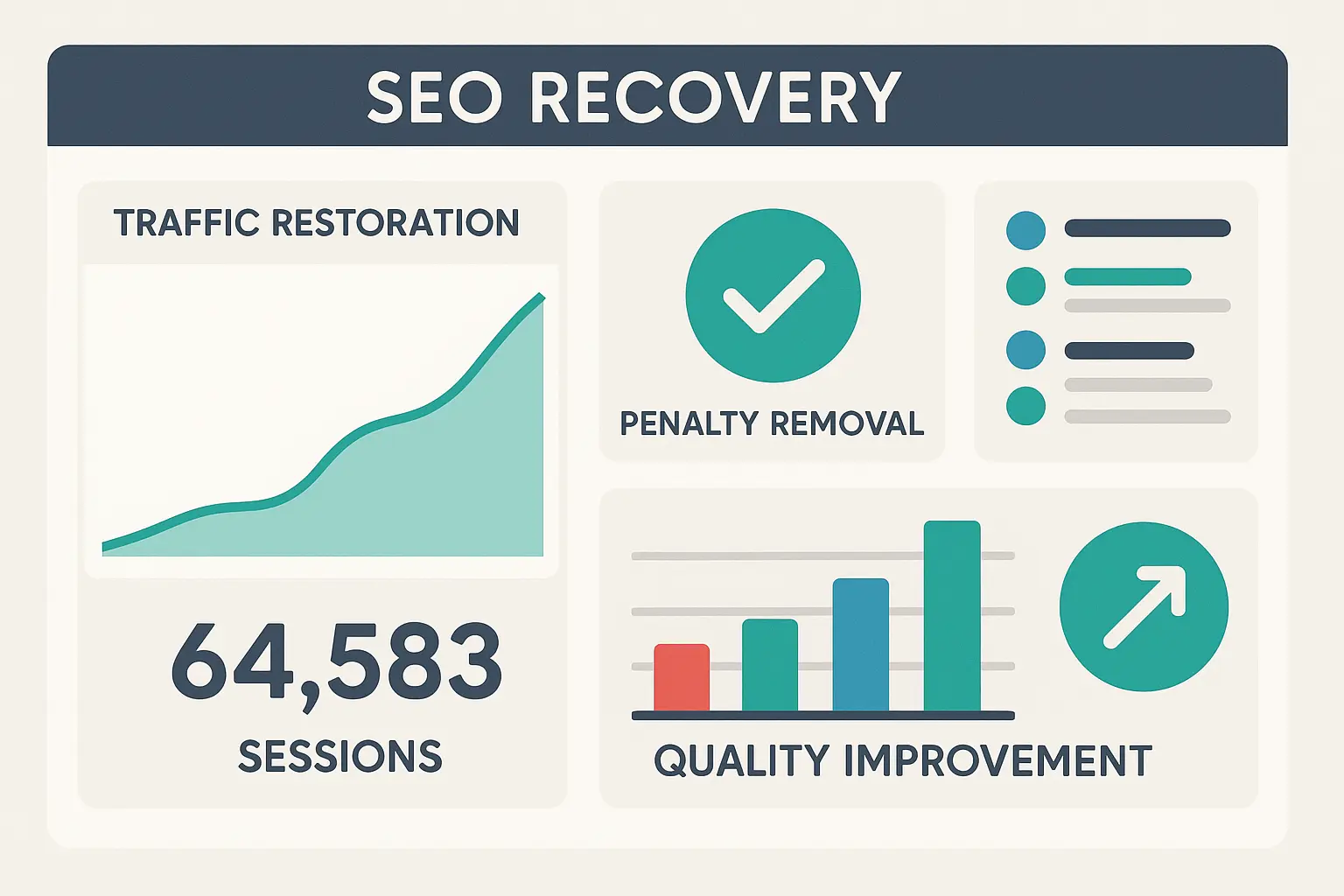
How to Evaluate These Case Studies for Your Business
Successfully applying these case studies to your business requires systematic evaluation across four key criteria: performance metrics that align with your goals, methodology transparency that enables replication, industry relevance to your specific market, and sustainability that ensures long-term success. Here’s the thing though – most businesses skip this evaluation step and wonder why their results don’t match the case studies.
Look, the real value in these case studies isn’t just reading about success stories – it’s understanding which strategies will actually work for your specific business situation. I’ve seen too many companies try to copy successful campaigns without considering whether the approach fits their resources, market, or business model. It’s like trying to follow a bodybuilder’s workout routine when you haven’t been to the gym in five years.
Performance metrics evaluation starts with understanding what success looks like for your business. If you’re a small retailer with limited resources, a case study showing 400% international growth might be impressive but completely irrelevant if you’re focused on local market penetration. Look for cases where the success metrics align with your current goals and growth stage.
Revenue attribution matters way more than traffic numbers. A case study showing 200% traffic growth means absolutely nothing if those visitors don’t convert. I’ve seen plenty of campaigns that drove thousands of visitors who bounced faster than a rubber ball. Focus on cases that demonstrate clear connections between SEO efforts and actual sales, customer acquisition costs, and lifetime value improvements.
Understanding the financial impact of SEO strategies requires proper measurement tools. Our marketing roi calculator can help you evaluate whether the investment required for similar strategies would generate positive returns for your business. Because what’s the point of implementing a strategy that costs more than it generates?
Methodology transparency determines whether you can actually replicate the results. Vague descriptions like “we optimized content” don’t provide actionable insights. Look for cases that document specific tactics, implementation timelines, resource requirements, and budget investments. The best case studies include enough detail that you could create your own implementation plan without guessing.
Industry relevance affects both strategy selection and expected results. B2B software SEO strategies won’t necessarily work for fashion ecommerce – different industries have different customer behaviors, competitive landscapes, and search patterns. Consider your industry’s typical purchase cycles, seasonal trends, and customer research patterns when evaluating case study applicability.
Company size alignment is crucial for resource planning. Enterprise-level strategies often require teams, tools, and budgets that smaller businesses simply can’t match. A Fortune 500 company’s comprehensive international expansion might require resources that would bankrupt a startup. Look for cases from companies with similar constraints and capabilities to yours.
Sustainability evaluation helps you avoid strategies that provide short-term gains but create long-term problems. The best case studies focus on white-hat practices that improve actual user experience rather than trying to game search algorithms. Look for approaches that have survived multiple algorithm updates and continue delivering results over time. Because what good is a strategy that works for six months and then gets you penalized?
How The Marketing Agency Can Transform Your Ecommerce SEO Results
The Marketing Agency’s scientific, data-driven approach addresses the key challenges revealed in these case studies through comprehensive technical audits, performance-focused strategies, and scalable investment options. Their expertise helps ecommerce businesses avoid common pitfalls while implementing proven strategies that deliver measurable ROI and sustainable growth.
After analyzing these 25 case studies, one thing becomes crystal clear: successful ecommerce SEO requires expertise, resources, and a systematic approach that most businesses struggle to implement internally. And honestly? That shouldn’t surprise anyone. The Marketing Agency’s scientific methodology directly addresses the critical success factors we’ve seen across these winning campaigns.
Their data-driven approach eliminates the guesswork that causes many SEO campaigns to fail spectacularly. Instead of hoping that content optimization will improve rankings (spoiler alert: hope isn’t a strategy), they conduct thorough technical audits to identify the highest-impact opportunities first. This scientific methodology ensures that your SEO investment targets the areas most likely to drive actual revenue growth.
The performance and ROI focus that defines The Marketing Agency’s philosophy aligns perfectly with the success metrics we’ve seen in the most valuable case studies. They don’t chase vanity metrics that make executives feel good but don’t pay the bills – they focus on the business outcomes that actually matter: revenue attribution, customer acquisition costs, and sustainable growth.
For ecommerce businesses specifically, The Marketing Agency’s ecommerce specialization ensures that strategies are tailored to the unique challenges of online retail, from product page optimization to conversion funnel improvements. They understand the complexities of managing thousands of product pages, seasonal fluctuations, and competitive pricing pressures.
Their scalable service structure allows you to start with foundational improvements and expand as results justify increased investment. Technical SEO audits and Core Web Vitals optimization can begin at lower investment levels, while comprehensive content strategies and international expansion require higher-tier engagements that match the complexity and resource requirements.
The risk mitigation aspect is particularly valuable given the penalty recovery cases we’ve examined. The Marketing Agency’s white-hat approach and ongoing compliance monitoring help prevent the costly mistakes that can devastate organic search performance. Your business shouldn’t gamble on SEO strategies that might work – you need proven approaches that deliver consistent results.
Their comprehensive approach to seo solutions covers all the critical areas highlighted in these case studies, from technical foundations to content strategy and authority building. Instead of piecing together different specialists, you get integrated expertise that ensures all elements work together effectively.
Ready to implement the strategies that actually work? The Marketing Agency’s team can help you identify which of these case study approaches best fit your business situation and create a customized implementation plan that delivers measurable results. Because reading about success is interesting, but achieving it is better.
Final Thoughts
These 25 case studies reveal that successful ecommerce SEO isn’t about finding secret tactics or gaming search algorithms – it’s about systematically improving your website’s technical foundation, creating genuinely valuable content, and building authentic authority in your market. The businesses that achieved the most impressive results focused on solving real customer problems while making their sites faster, more useful, and easier to navigate.
The timeline patterns across these cases show that meaningful SEO results require patience and sustained effort. Technical improvements can deliver results in 3-8 months (assuming you don’t break everything during implementation), while content marketing and authority building typically take 12-24 months to reach full potential. International expansion and recovery from penalties often require even longer commitments, but the businesses that stayed the course achieved transformational growth.
What strikes me most about these success stories is how they prioritized user experience alongside search optimization. The fashion retailer that improved site speed didn’t just boost their search rankings – they created a better shopping experience that increased conversions. The furniture chain that mastered local SEO didn’t just appear in more searches – they made it easier for customers to find and visit their stores.
The resource requirements vary dramatically across these strategies, but every successful campaign required significant expertise and sustained effort. Whether you’re implementing technical optimizations, creating comprehensive content strategies, or building international presence, the complexity demands either substantial internal capabilities or partnership with experienced professionals who understand both the technical requirements and business implications of ecommerce SEO.
Look, I’d love to tell you there’s some magic formula here, but there isn’t. Success comes from understanding your customers, solving their problems, and consistently executing proven strategies over time. Your mileage may vary, obviously, but the principles behind these case studies are solid. The question isn’t whether SEO works for ecommerce – it’s whether you’re willing to invest the time, resources, and expertise required to make it work for your business.



